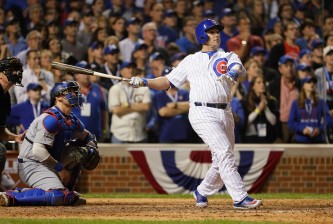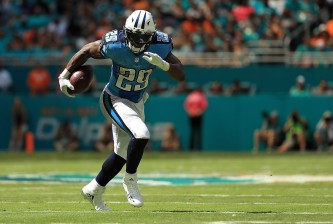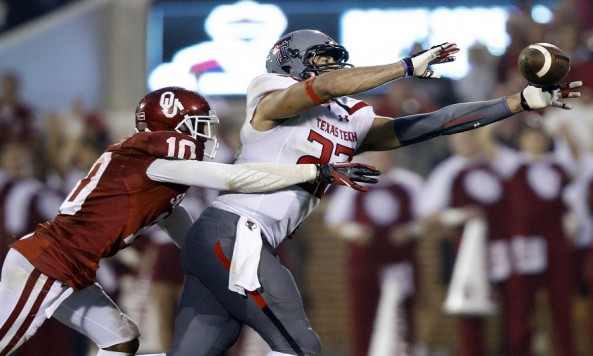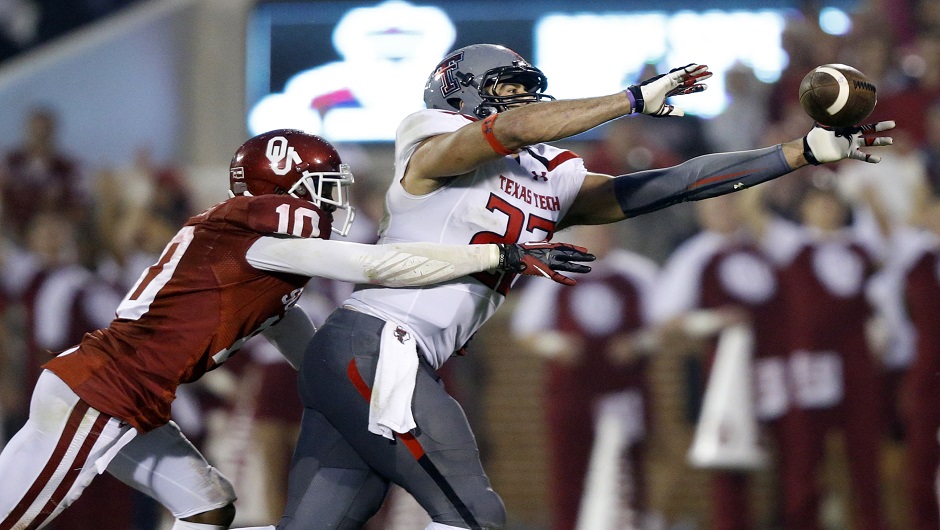As draft day approaches, it’s important not only to know who the best prospects in the class are, but also what each player brings to the table. The top players have a variety of skills that have made them all-around players and worthy of high draft picks, while others possess only one great skill.
It might be a linebacker who excels in rushing the passer and is non-existent versus the run. Or a defensive lineman who is a dominant run-stopper and comes off the field on passing downs. Even on offense, there are players who are primary deep threats, slot receivers or return men. Being a one-dimensional player isn’t a bad thing—they comprise playoff teams and play key roles for teams’ successes.
Paul Richardson, WR, Colorado
When people talk of the Scouting Combine, the main drill discussed is the 40-yard dash. Everyone loves speed—it’s one of the skills coaches just can’t teach and can never have enough of. Richardson offers teams just that as he showed this past season at Colorado.
Richardson came back from a torn ACL in 2012 and showed zero lingering effects this past season at Colorado. He flashed the same explosiveness and agility before the knee injury. Richardson has the ideal straight-line speed and a quick burst to slip past cornerbacks and provides a vertical threat for teams.
For all of the explosiveness Richardson offers as a wide receiver, he lacks a key component that reliable NFL wide receivers have. Too often this past season Richardson dropped passes that slid right between his hands. He loses track of the football and misses out on big play opportunities. He also struggles against press coverage and shows hesitation to fight for the football. These are all things that basic wide receivers have and until Richardson improves, he will serve in a limited role. For all of the athleticism Richardson brings to the table, he is a vertical threat who hasn’t shown the ability to catch the football consistently.
Dri Archer, RB, Kent State
The most exciting player to watch on this list—Archer was one of the fastest players in college football in 2012 before the hype surrounding him died down a bit this past season. Just spend a few minutes watching some of his highlights and you see why he quickly became a star for Kent State.
While Archer’s numbers may have taken a hit last season, he still displayed the same rare athleticism and burst that will stand out at the next level. His 4.26 40-yard dash time at the Combine this year showed just how fast he truly is and how he finished his career with 1,436 kick return yards on 52 attempts. He has the ability to be amongst the best return men in the NFL while also working as a slot receiver who can break off big yards after the catch.
Teams in need of a great return man should look directly towards Archer as the solution to their problems. He can come in and be a home-run threat right away on special teams. At 5’8″ and 173 pounds he won’t be able to sustain countless hits at the next level and therefore needs limited carries in order to maximize his effectiveness and maintain his durability.
Daniel McCullers, DT, Tennessee
McCullers is the big man of the draft at 6’7″ and 352 pounds—towering over the rest of his competition. Scouts will be drawn to his massive size and drool over a mountain they can plug into the defensive line. While size is always nice to have in the NFL, it doesn’t necessarily make McCullers a must-have prospect.
His size is certainly something that draws attention, especially from the offensive linemen across from him. On nearly every play in college, he saw double-teams as opposing offenses looked for ways to keep him from crushing their running back. McCullers excels versus the run—his massive frame plugs up the middle and he uses his strength to overpower blockers and take away the inside running lanes. He is the ideal run-stuffing lineman who can excel in a situational role.
But McCullers simply can’t be trusted to create interior pressure on passing downs—his poor pad level and height cause him to lose leverage versus blockers and get taken out of the play. His slow hands make it harder for him to disengage from blocks and his massive size becomes neutralized because of poor mechanics. These are all things McCullers needs to work on before he can be anything more than a one or two-down player.
Dee Ford, OLB, Auburn
Ford will be the highest-drafted player on this list and he should be—his performances in big games including the BCS National Championship perfectly showcased just what he can bring to an NFL team as a first-round selection.
Watch the tape of Ford against Texas A&M, Florida State and Ole Miss to see just what he brings to the table—a phenomenal athlete who excels at beating offensive tackles with a lightning first step and flexibility to get around the edge. He also has shown impressive strength to fight through blockers possessing the speed and power that great pass rushers have. Ford shows the versatility to play both defensive end and outside linebacker with his key assignment being to attack the quarterback. He is a dominant pass-rusher and enters the NFL in an era when pressuring the quarterback is necessary for a great defense.
There is no denying Ford stands out with his pass-rush ability from both defensive end and outside linebacker. He has shown brief glimpses of the ability to drop into coverage, but that is still a major work in progress moving forward. Ford can’t be relied upon to stop the run as he doesn’t have the size to match up with bigger tackles and he loses the battle for leverage. Ford can come in as an impact pass-rusher right away, but coaches will need to spend time with him so as to become a more all-around player.
Jace Amaro, TE, Texas Tech
As the NFL continues as a passing league and teams look for more receiving options for their offenses, tight ends have began to emerge as major pieces of the passing game. This helps Amaro, as he enters the draft coming off a breakout season with 106 receptions and 1,352 receiving yards last season at Texas Tech.
He was the go-to target for the Red Raiders’ offense and outperformed everyone despite poor quarterback play and constantly drawing double coverage. Texas Tech knew how to use Amaro’s size and athleticism—he would primarily line up in the slot where he would consistently win a mismatch versus linebackers and safeties. Big-12 defenses couldn’t handle the Red Raiders’ spread offense with Amaro burning them up the middle. NFL teams will certainly want to follow in Texas Tech’s footsteps by lining up Amaro as a slot receiver and letting him exploit coverages.
Amaro’s speed and size creates a mismatch in the slot—but NFL teams will be making a mistake if they plan to use him outside or as an in-line tight end. He lacks the strength to hold blocks against defensive ends and would be overmatched on the line of scrimmage as a blocker. Amaro benefited from being in a spread offense where he could just use his size to beat slower, smaller players and not run a variety of routes. He can run basic routes but in many cases, he just runs around the field until he is able to get open. While Amaro’s frame will be a mismatch, his inability to run clean routes and create separation will limit his impact as a rookie.
Stephen Morris, QB, Miami (FL)
There are few things more impressive than watching a quarterback effortlessly heave the football downfield. Morris showed the past two seasons at Miami that he has the arm strength that can make quarterback coaches drool.
Morris has more than enough arm strength for the NFL and can make all of the big-time throws required. When pressured, he has the athleticism and pocket awareness to make adjustments in the pocket and buy himself more time to throw. While all of this is going on he keeps his eyes downfield looking for the open wide receiver. Few quarterbacks in this class can match the powerful arm Morris brings to the table and he has shown the ability to deliver deep passes on the money.
It’s hard not to like Morris’ rocket arm and athleticism to move around in the pocket, but a big arm and mobility are all he has at this point. While many were hoping Morris’ improved his timing and accuracy, Morris failed to take the next step in 2013. He continued to react late when reading opposing defenses—which allowed them to react before the football arrived and resulted in 12 interceptions. Morris lacks the touch to put the ball on the money consistently whichresults in too many missed opportunities.
He is a gunslinger who trusts his arm more than he should and his inconsistent decision-making paired with poor ball placement overcomes his powerful arm. Morris can move around in the pocket fairly well and sling it deep— but none of that matters because he just can’t hit his spots consistently.
























